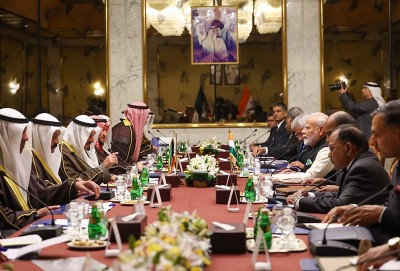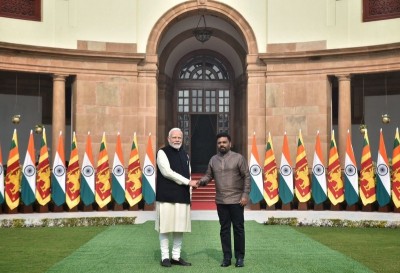 LAC
LAC
Indian and Chinese troops exchange Diwali sweets as border disengagement completes
New Delhi/IBNS: The Indian and Chinese troops exchanged sweets along the Line of Actual Control as the border disengagement process completed marking the end of more than four-year conflict between the two Asian giants, media reports said.
The troops exchanged sweets on the occasion of India's Hindu festival of Diwali at five locations along LAC including two in Ladakh.
Defence Minister Rajnath Singh on Thursday said the disengagement of Indian and Chinese troops along the LAC is "almost complete", updating about the consensus reached by India and China.
Singh on Thursday said, "India and China have held diplomatic and military talks to resolve conflicts in some areas along the Line of Actual Control (LAC). Recently, they reached a broad consensus to restore the ground situation, based on equal and mutual security.
"This agreement includes patrolling and grazing rights in traditional areas. Disengagement is almost complete, and efforts will continue to move beyond disengagement, but that may take some time."
The disengagement was held at two points of Ladakh, Depsang and Demchok.
PHOTO | Indian Army troops exchange sweets with Chinese soldiers at several border points along the LAC on the occasion of Diwali. #Diwali #Diwali2024
— Press Trust of India (@PTI_News) October 31, 2024
(Source: Third Party) pic.twitter.com/QjZGVcExdD
The troops of the two Asian giants returned to the status which prevailed before the deadly Galwan clash in 2020.
Last month, India and China reached a consensus and agreed to disengage along the border "in a coordinated and planned way".
Both the armies had agreed to withdraw from their positions to their respective positions on their sides and verify each others' positions after that.
For over four years, the two countries were engaged in a military standoff along the Line of Actual Control (LAC) following the Galwan clash which took place in June 2020.
Galwan Clash
The Galwan skirmish erupted from a dispute over a temporary bridge built by the Chinese in the Galwan River valley in Ladakh.
On June 15, 2020, Indian and Chinese troops engaged in a six-hour clash in the rugged terrain of Ladakh, engaging in hand-to-hand combat with makeshift weapons such as stones, batons, and iron rods.
The face-off occurred in near-complete darkness and freezing temperatures, leading to fatalities as soldiers fell or were pushed from ridges.
Twenty Indian soldiers were martyred in the clash, while China officially acknowledged four casualties, although reports indicate higher Chinese losses, as soldiers drowned in the choppy waters of the Galwan River.
Among the Indians, Colonel B Santosh Babu, the Commanding Officer of the 16th Bihar Regiment, was martyred during the unprovoked aggression by PLA troops.
The Galwan clashes highlighted China's aggressive stance towards its neighbouring countries.
Many observers on social media noted similarities between the Chinese attack on Philippine navy ships and the 2020 Galwan Valley clash.
Support Our Journalism
We cannot do without you.. your contribution supports unbiased journalism
IBNS is not driven by any ism- not wokeism, not racism, not skewed secularism, not hyper right-wing or left liberal ideals, nor by any hardline religious beliefs or hyper nationalism. We want to serve you good old objective news, as they are. We do not judge or preach. We let people decide for themselves. We only try to present factual and well-sourced news.







